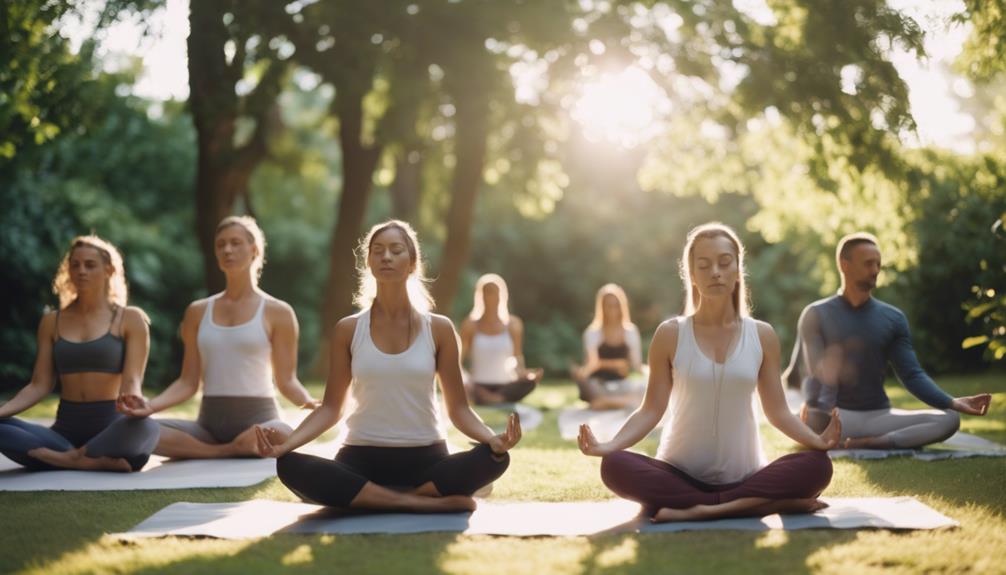Yoga For Scoliosis

Scoliosis is a medical condition characterized by an abnormal curvature of the spine. This condition can lead to discomfort and pain, affecting the quality of life for many individuals. With the increasing interest in holistic health approaches, yoga has emerged as a popular method for managing scoliosis symptoms. In this article, we will explore how yoga for scoliosis can be beneficial, the specific poses that can help, and tips for incorporating yoga into your daily routine.
Understanding Scoliosis: What You Need to Know
Scoliosis affects approximately 2-3% of the population, with varying degrees of severity. The curvature of the spine can be classified into three main types: idiopathic, congenital, and neuromuscular. While the exact cause of idiopathic scoliosis is unknown, it typically develops during adolescence. Congenital scoliosis is present at birth due to abnormal vertebral development, while neuromuscular scoliosis occurs due to conditions like cerebral palsy or muscular dystrophy. Understanding the type and severity of scoliosis is crucial for determining appropriate treatment options, including the role that yoga can play in managing symptoms.
The Benefits of Yoga for Scoliosis
Yoga is not just a physical practice; it is a holistic approach that encompasses the mind, body, and spirit. For individuals with scoliosis, yoga can provide multiple benefits. Firstly, specific yoga poses can help improve posture and spinal alignment, which is crucial for those dealing with the curvature of the spine. Secondly, yoga promotes flexibility and strength, which can alleviate muscle tension and discomfort associated with scoliosis. Lastly, the breathing techniques and mindfulness aspects of yoga can reduce stress and anxiety, further enhancing overall well-being. By integrating yoga into your routine, you may find not only physical relief but also mental clarity.
Key Yoga Poses for Scoliosis Relief
When practicing yoga for scoliosis, it’s essential to focus on poses that promote balance and alignment. Some of the most beneficial poses include:
1. Cat-Cow Stretch: This gentle flow between two positions helps increase flexibility in the spine and warms up the back muscles.
2. Child’s Pose: This restorative pose allows for relaxation and elongation of the spine, providing a gentle stretch to the back.
3. Triangle Pose: This pose encourages side bending, which can help lengthen the spine and promote better alignment.
4. Seated Forward Bend: This pose stretches the spine and hamstrings, relieving tension in the back.
5. Reclined Spinal Twist: This pose helps increase spinal mobility and can be particularly beneficial for those with rotational curvature.
Practicing these poses regularly can help in improving spinal alignment and reducing discomfort associated with scoliosis.
How to Safely Practice Yoga with Scoliosis
Safety is paramount when practicing yoga for scoliosis. It’s important to consult with a healthcare professional or a certified yoga instructor who has experience working with scoliosis patients. They can help tailor a yoga routine that suits your specific needs. Additionally, always listen to your body; if you experience pain or discomfort during a pose, modify the pose or skip it altogether. Using props like blocks or straps can also provide support and facilitate proper alignment. Remember, the goal of yoga is not to achieve perfect poses but to cultivate awareness and promote healing.
Incorporating Breathing Techniques in Your Yoga Practice
Breathing techniques, known as pranayama in yoga, play a vital role in enhancing the benefits of yoga for scoliosis. Proper breathing promotes relaxation and helps in engaging the core muscles, which provide support to the spine. Techniques such as diaphragmatic breathing can help expand the ribcage and improve lung capacity, which is especially beneficial for those with thoracic scoliosis. Incorporating breathing exercises into your routine can enhance your yoga practice and contribute to overall spinal health.
Creating a Consistent Yoga Routine
Establishing a consistent yoga routine is essential for maximizing the benefits of yoga for scoliosis. Aim to practice at least three times a week, even if it’s just for 15-20 minutes. Start with gentle stretches and gradually incorporate more poses as you become comfortable. It can also be helpful to join a local yoga class or follow online tutorials specifically designed for individuals with scoliosis. Engaging with a community can provide motivation and support, making your yoga journey more enjoyable.
Additional Therapies and Treatments for Scoliosis
While yoga can be incredibly beneficial, it should be considered as part of a comprehensive approach to managing scoliosis. Other treatments may include physical therapy, chiropractic care, or bracing, depending on the severity of the condition. Always consult with a healthcare professional before starting any new treatment regimen. Integrating yoga with other therapies can create a well-rounded approach to managing scoliosis and improving overall quality of life.
Conclusion: Embracing Yoga for a Healthier Spine
In conclusion, yoga for scoliosis offers a holistic approach to managing this complex condition. By understanding the benefits, practicing key poses safely, and creating a consistent routine, individuals with scoliosis can find relief from discomfort and improve their overall spinal health. Remember that each journey is unique, and it’s essential to listen to your body and work with professionals when necessary. Embrace the power of yoga, and take the first step towards a healthier spine today.
By integrating yoga into your daily routine, not only can you alleviate the symptoms of scoliosis, but you can also enhance your physical and mental well-being.Is Yoga Sculpt A Good WorkoutDoes A Yoga Ball Induce Labor